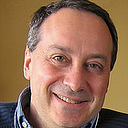Member-only story
Time to Start Worrying About the Bomb (Again)
Nuclear disarmament dropped off the radar after the 1980s, but Putin’s nuclear saber-rattling ought to revive public interest in the cause
Forty years ago this coming June, a million people rallied in Central Park to call for a freeze in the nuclear arms race between the United States and the Soviet Union. It was the high point for a grassroots movement that built on the work of secular antiwar groups like Mobilization for Survival and church-based pacifist organizations like the American Friends Service Committee, who had long agitated against nuclear weapons as immoral without much popular traction. That changed during the early years of President Ronald Reagan’s first term in office, when his insistence on a major build-up of the US nuclear arsenal and talk of even “winning” a nuclear war awoke many Americans to the danger of atomic apocalypse. While the “Freeze” movement itself faded after the House of Representatives passed a nonbinding resolution of support in the spring of 1983 and Reagan toned down his saber-rattling, it ultimately helped change the course of the arms race. Allied with similar anti-nuclear groups across both sides of the Iron Curtain in Europe, disarmament activists managed to convince Mikhail Gorbachev, then the new leader of the Soviet Union, to…

